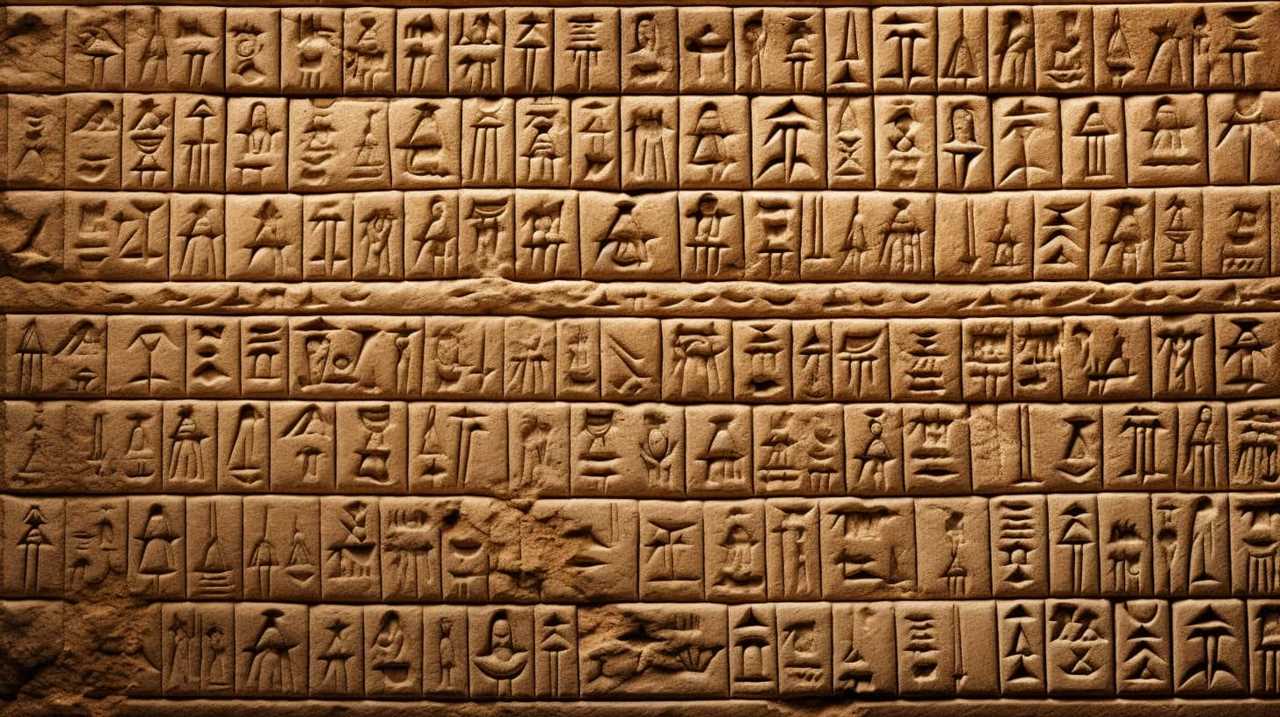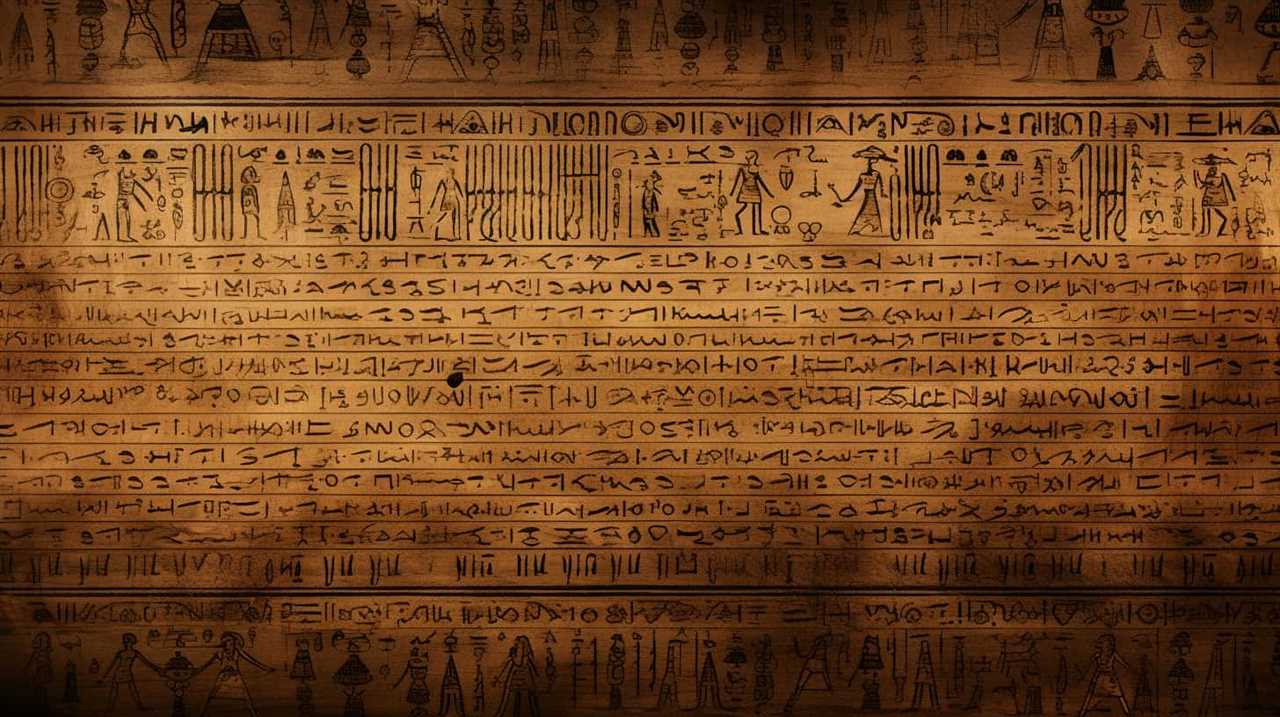What can we learn from Stoicism in today’s society?
Oh, just another ancient philosophy that we can dismiss as irrelevant and outdated. Or so we might think.
But wait! Before we cast Stoicism aside, let’s consider its timeless wisdom and practicality.
Stoicism offers a framework for living a more meaningful and resilient life, even in the face of chaos and uncertainty. By focusing on principles like virtue, acceptance, and the dichotomy of control, Stoicism provides valuable insights into navigating our modern world.
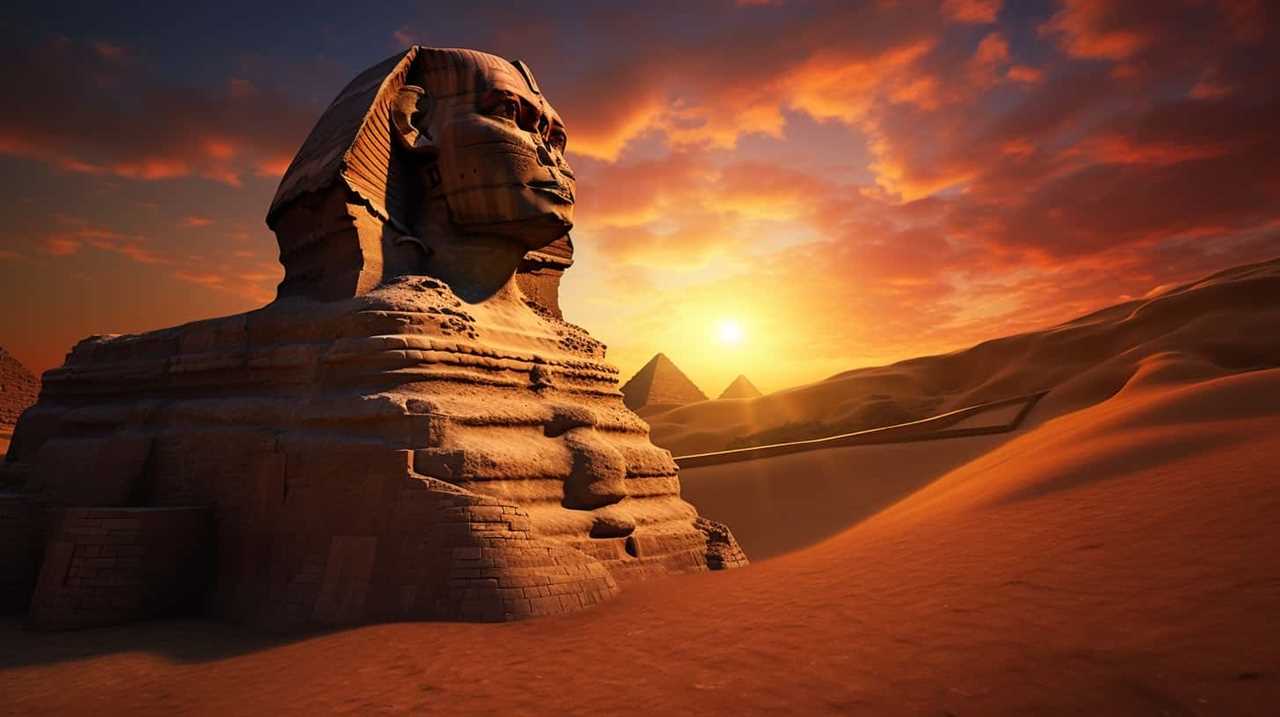
It teaches us to cultivate inner strength, find serenity amidst the storms, and live in harmony with nature.
So, let’s put aside our preconceptions and explore what Stoicism can truly teach us today.
Key Takeaways
- Focus on what’s within our control and shift attention away from external circumstances
- Cultivate inner peace, resilience, and acceptance of things we cannot control
- Take responsibility for personal growth and align actions with moral values and principles
- Embrace impermanence, practice mindfulness, and overcome negative emotions through acceptance, rationality, and gratitude
Principles of Stoicism
One of the key principles of Stoicism is that we should focus on what’s within our control. In today’s modern society, where we often feel overwhelmed by external circumstances and the pressures of daily life, applying Stoic principles can be a powerful tool for personal growth.
Stoicism teaches us to shift our focus away from things that are beyond our control, such as the actions of others or the outcome of certain events. Instead, we should direct our attention towards what we can control – our thoughts, actions, and attitudes. By doing so, we’re able to cultivate a sense of inner peace and resilience, even in the face of adversity.
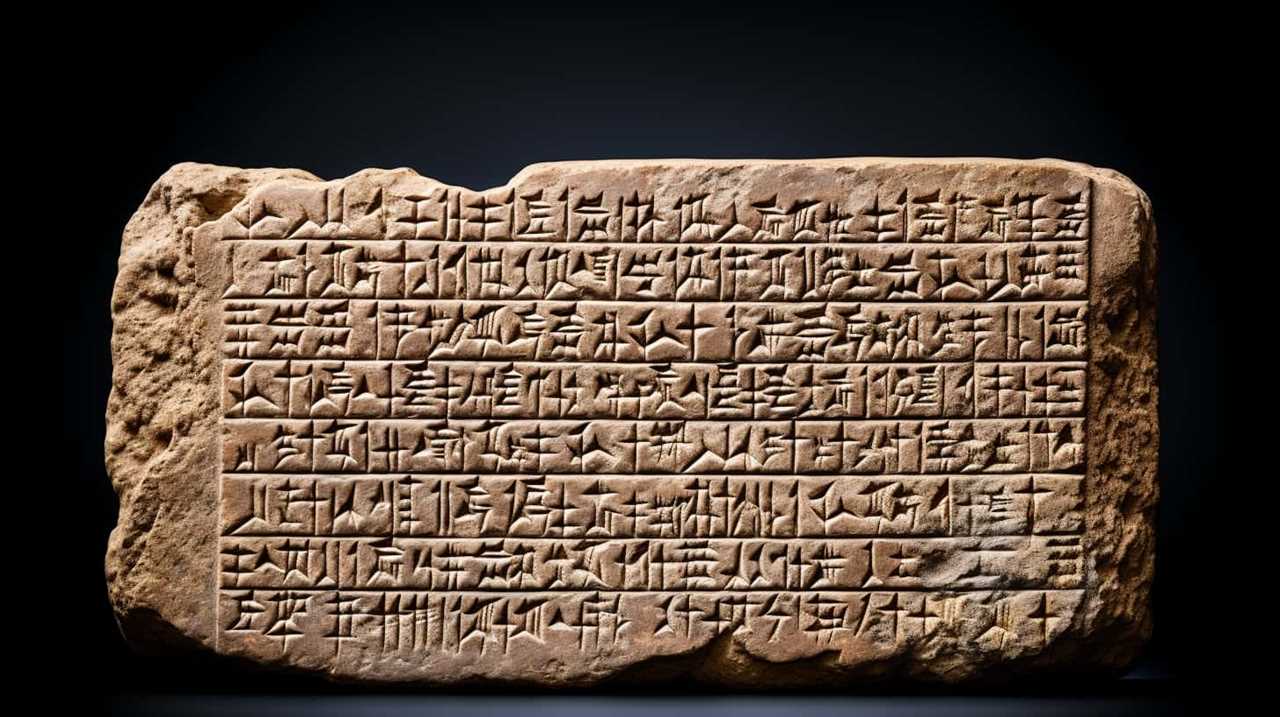
Applying Stoicism to personal growth means taking responsibility for our own happiness and well-being. It means recognizing that external circumstances don’t define us, but rather how we choose to respond to them. Stoic principles encourage us to cultivate virtues such as wisdom, courage, and self-discipline, which are essential for personal development.
In a society that often values external achievements and material possessions, Stoicism reminds us that true fulfillment comes from within. It teaches us to detach our happiness from external circumstances and instead find contentment in living a virtuous life. By applying Stoic principles, we can navigate the challenges of modern society with grace and cultivate a sense of inner peace and fulfillment.
Stoic Ethics and Virtues
When it comes to Stoic Ethics and Virtues, we can learn valuable lessons about virtue in action, cultivating moral character, and following Stoic ethical principles.
Stoicism encourages us to not just have knowledge of what’s right and wrong, but to actively embody these virtues in our daily lives.

Virtue in Action
Stoic ethics and virtues prompt us to embody virtue through active engagement. Cultivating excellence and moral excellence is at the core of Stoic philosophy. It teaches us that true virtue lies not just in theoretical knowledge, but in the actions we take in our daily lives.
Stoics believe that virtue is the highest good, and it’s through virtuous actions that we can achieve true happiness and fulfillment. By actively practicing virtues such as wisdom, courage, justice, and temperance, we can align our actions with our moral values and live a virtuous life. This requires self-reflection, self-discipline, and a commitment to consistently act in accordance with our principles.
Stoicism challenges us to not only understand virtue, but to actively embody it in our thoughts, words, and deeds.
Cultivating Moral Character
To cultivate moral character, we must actively engage in embodying Stoic ethics and virtues. Developing integrity and cultivating empathy are key aspects of this process.

Stoicism teaches us that integrity is the foundation of moral character. It requires us to align our thoughts, words, and actions with our core values and principles. By consistently acting in accordance with what we believe to be right and just, we strengthen our character and become more virtuous individuals.
Cultivating empathy, on the other hand, allows us to understand and relate to the experiences and emotions of others. It enables us to treat others with kindness and compassion, fostering harmonious relationships and contributing to the well-being of society.
Stoic Ethical Principles
In the realm of Stoic ethical principles, we find valuable guidance for cultivating virtuous character and leading a meaningful life. Stoicism emphasizes the importance of adhering to principles of morality and developing resilience in the face of challenges.
The Stoics believed that living a virtuous life was the key to achieving true happiness and fulfillment. They identified four cardinal virtues: wisdom, courage, justice, and temperance. These virtues serve as a moral compass, guiding individuals towards making ethical decisions and acting in accordance with reason.

Cultivating Inner Resilience
By developing our capacity for emotional fortitude, we can foster inner resilience that enables us to face life’s challenges with greater strength and adaptability. Building resilience and cultivating inner strength are essential in navigating the ups and downs of life. Stoicism offers valuable insights and practices that can help us develop these qualities.
One key aspect of cultivating inner resilience is accepting the things we cannot control. Stoicism teaches us to focus our energy and efforts on what is within our control, such as our thoughts, actions, and attitudes. This shift in mindset allows us to let go of unnecessary worries and anxieties, freeing up our mental and emotional resources to deal with the challenges at hand.
Another important aspect is practicing self-discipline. Stoicism encourages us to cultivate self-control and moderation in our actions and desires. By being mindful of our impulses and practicing restraint, we can avoid being overwhelmed by external circumstances and maintain our inner balance.
Additionally, developing a sense of gratitude and perspective can greatly contribute to our inner resilience. Stoicism teaches us to appreciate the present moment and to view setbacks as opportunities for growth and learning. This mindset shift helps us develop a more positive outlook and equips us with the inner strength to overcome obstacles.

Incorporating Stoic principles into our lives can enhance our capacity for emotional fortitude and build resilience. By accepting what we cannot control, practicing self-discipline, and cultivating gratitude, we can foster inner resilience that empowers us to face life’s challenges with greater strength and adaptability.
| Principles of Stoicism | Benefits |
|---|---|
| Acceptance of what we cannot control | Reduces anxiety and increases peace of mind |
| Self-discipline and moderation | Enhances self-control and reduces impulsivity |
| Gratitude and perspective | Promotes a positive outlook and growth mindset |
The table above summarizes the principles of Stoicism and the benefits they bring. By incorporating these principles into our lives, we can develop the inner resilience necessary to navigate life’s challenges with grace and strength.
Finding Serenity in Chaos
When chaos surrounds us, it’s easy to feel overwhelmed and lose our sense of peace.
However, Stoicism teaches us the importance of embracing inner peace and cultivating calm amidst turmoil.

Embracing Inner Peace
While chaos surrounds us, we can find serenity by embracing inner peace through the teachings of Stoicism. In today’s fast-paced world, it’s easy to get overwhelmed by the constant demands and pressures that come our way. However, Stoicism offers valuable insights on how to cultivate inner calm and find tranquility amidst the chaos.
Stoicism teaches us that true peace comes from within, not from external circumstances. By focusing on what we can control – our thoughts, emotions, and actions – rather than what’s beyond our control, we can maintain a sense of inner peace. This involves accepting the reality of the present moment and practicing mindfulness to stay grounded.
Furthermore, Stoicism encourages us to detach ourselves from the outcomes of our actions and instead focus on the process itself. By letting go of our attachment to specific outcomes, we free ourselves from unnecessary stress and find peace in the journey rather than the destination.
Cultivating Calm Amidst Turmoil
Amidst the turmoil, we can find serenity by cultivating calm through the teachings of Stoicism. Stoicism offers practical strategies for finding peace within and maintaining equanimity, even in the face of chaos.

Here are four ways Stoicism can help us navigate turbulent times:
- Practicing acceptance: Stoicism teaches us to accept the things we can’t control and focus our energy on what we can influence. By accepting the reality of a situation, we can avoid unnecessary stress and find inner peace.
- Embracing the present moment: Stoicism emphasizes the importance of living in the present moment. By focusing on the here and now, we can let go of worries about the past or future and find tranquility in the present.
- Cultivating resilience: Stoicism encourages us to develop mental toughness and resilience. By training ourselves to face adversity with a calm and rational mindset, we can navigate through turmoil with grace and composure.
- Practicing self-reflection: Stoicism teaches us to regularly reflect on our thoughts, actions, and emotions. By examining ourselves honestly and striving for self-improvement, we can cultivate inner peace and maintain equanimity even in the midst of chaos.
Navigating Chaos With Tranquility
To navigate chaos with tranquility, we can embrace Stoic principles that guide us towards finding peace in the midst of turmoil.
In the face of chaos, it’s essential to remember that we can’t control external events, but we can control our reactions to them. Stoicism teaches us to cultivate a mindset of acceptance and to embrace the inevitability of chaos in life.
Instead of resisting or fearing chaos, we can choose to embrace it and see it as an opportunity for growth and self-improvement. By accepting the inherent unpredictability of life, we can find serenity amidst the chaos.

This mindset allows us to let go of the need for control and find peace in the present moment, regardless of the external circumstances. Embracing chaos becomes a path to tranquility, where we find solace in the knowledge that we can navigate through any storm with grace and resilience.
The Power of Acceptance
Stoicism teaches us the profound strength of embracing acceptance. In a world that’s constantly changing and full of uncertainty, the power of surrendering to what’s can be transformative. By embracing the present moment and accepting it as it is, we can find peace and clarity amidst the chaos.
Here are four ways in which the power of acceptance can benefit our lives:
- Inner peace: When we accept the things we can’t change, we free ourselves from the burden of resistance and attachment. This allows us to cultivate inner peace and tranquility, regardless of external circumstances.
- Emotional resilience: Acceptance helps us build emotional resilience by teaching us to acknowledge and validate our feelings without being consumed by them. It allows us to respond to challenging situations with equanimity and grace.
- Flexibility and adaptability: Accepting the present moment means embracing change and being open to new possibilities. This mindset enables us to adapt to unexpected circumstances and find creative solutions to problems.
- Freedom from suffering: When we resist reality, we often create unnecessary suffering for ourselves. Acceptance liberates us from this self-inflicted pain and allows us to find contentment and happiness in the present moment.
Embracing Impermanence
When it comes to embracing impermanence, we must first acknowledge the reality of life’s transience. Everything around us is constantly changing and evolving, and clinging to the idea of permanence only leads to suffering.

Accepting Life’s Transience
While it may be challenging, we can learn from Stoicism about the importance of accepting life’s transience and embracing impermanence. Stoicism teaches us that life is inherently unpredictable and that everything we hold dear will eventually fade away. Instead of resisting this reality, we can find peace in accepting it.
Here are four key insights from Stoicism on embracing impermanence and finding peace in uncertainty:
- Embracing impermanence: Stoicism encourages us to let go of our attachment to things and people, recognizing that they’re temporary. By embracing impermanence, we can free ourselves from the anxiety and fear that comes with clinging to what can’t last.
- Practicing non-attachment: Stoicism teaches us to cultivate a mindset of non-attachment, recognizing that our happiness shouldn’t depend on external circumstances. By detaching ourselves from outcomes and possessions, we can find inner peace and focus on what truly matters.
- Living in the present moment: Stoicism emphasizes the importance of living in the present moment, as it’s the only reality we’ve control over. By embracing the transience of life, we can fully immerse ourselves in the present, savoring each moment and finding joy in the here and now.
- Finding meaning in impermanence: Stoicism teaches us that the impermanence of life doesn’t make it meaningless. Instead, it urges us to find purpose and meaning in our actions and relationships, knowing that our legacy lies in how we live our lives rather than in what we accumulate.
Finding Peace in Impermanence
Embracing impermanence allows us to find peace in the ever-changing nature of life. Stoicism teaches us that change is inevitable and rather than resisting it, we should learn to embrace it. By accepting the impermanence of everything around us, we can free ourselves from attachment and find tranquility in the present moment.
In a world where everything is constantly shifting, finding stability can seem impossible. However, by adopting a stoic mindset, we can learn to navigate through the ups and downs of life with equanimity. Embracing change means acknowledging that nothing lasts forever, and that includes both the good and the bad. This realization allows us to detach ourselves from the outcomes and find peace in the present moment.

Finding tranquility in impermanence requires a shift in perspective. Instead of clinging to what’s familiar and comfortable, we must learn to embrace uncertainty and embrace the unknown. Stoicism teaches us that true peace comes from within, and by accepting the impermanence of life, we can find solace in the knowledge that everything is constantly evolving.
Overcoming Negative Emotions
To effectively overcome negative emotions, it’s important that we acknowledge and understand the underlying causes that contribute to their manifestation. Stoicism provides valuable insights and practical tools to help us manage stress and build resilience.
Here are four key strategies that Stoicism teaches us for overcoming negative emotions:
- Acceptance: Stoicism teaches us to accept the things that are beyond our control. By recognizing that we can’t change certain external circumstances, we can redirect our focus and energy towards what we can control – our thoughts and actions.
- Mindfulness: Stoicism emphasizes the importance of being present in the moment and paying attention to our thoughts and emotions. By practicing mindfulness, we can become more aware of our negative emotions and their triggers, allowing us to respond to them in a more constructive way.
- Rationality: Stoicism encourages us to examine our negative emotions from a rational perspective. By questioning the validity of our thoughts and challenging irrational beliefs, we can gain a clearer understanding of our emotions and develop healthier coping mechanisms.
- Gratitude: Stoicism reminds us to cultivate a sense of gratitude for what we have. By focusing on the positive aspects of our lives, we can shift our perspective and reduce the intensity of negative emotions.
Developing a Growth Mindset
Stoicism teaches us the importance of adopting a growth mindset to foster personal development and resilience. By cultivating resilience and embracing growth, we can navigate life’s challenges with a sense of purpose and optimism.

A growth mindset is the belief that our abilities and intelligence can be developed through dedication and effort. It is the understanding that failures and setbacks are opportunities for learning and improvement. Stoicism encourages us to embrace this mindset, as it allows us to approach obstacles with a sense of curiosity and determination.
To illustrate the power of a growth mindset, let’s consider the following table:
| Fixed Mindset | Growth Mindset |
|---|---|
| Avoids challenges | Embraces challenges |
| Views failure as permanent | Views failure as a stepping stone towards success |
| Feels threatened by the success of others | Finds inspiration in the success of others |
As you can see, adopting a growth mindset enables us to approach challenges head-on, learn from our mistakes, and find motivation in the accomplishments of others. This mindset not only fosters personal development but also equips us with the resilience needed to thrive in an ever-changing world.
Practicing Mindfulness and Meditation
Let’s explore the benefits of practicing mindfulness and meditation, as well as the techniques we can utilize to enhance our practice.

By cultivating a present moment awareness and training our minds to be more focused and calm, we can experience reduced stress, improved well-being, and increased resilience.
Moreover, we can incorporate Stoic principles into our mindfulness and meditation practice, such as accepting what’s beyond our control and cultivating gratitude for the present moment.
Benefits of Mindfulness
Practicing mindfulness and meditation offer us numerous benefits in today’s fast-paced and demanding world. Here are four key benefits of incorporating mindfulness into our everyday lives:
- Increased focus and concentration: Mindfulness helps us train our minds to stay present in the moment, allowing us to focus better on the task at hand and improve our concentration.
- Stress reduction: Mindfulness allows us to become more aware of our thoughts and emotions, helping us manage stress more effectively and promote a sense of calm and relaxation.
- Improved emotional well-being: By practicing mindfulness, we develop the ability to observe our thoughts and emotions without judgment, leading to increased self-awareness, emotional regulation, and overall well-being.
- Enhanced resilience: Mindfulness cultivates our ability to respond to challenges with greater clarity and equanimity, enabling us to bounce back from setbacks and navigate difficult situations more effectively.
Incorporating mindfulness into our daily lives can bring about profound positive changes, allowing us to thrive in the midst of life’s challenges.

Techniques for Meditation
To fully engage in the practice of mindfulness and meditation, we can explore various techniques that allow us to cultivate a sense of presence and awareness in our daily lives. Mindfulness exercises help us develop the ability to pay attention to the present moment without judgment. One simple technique is focusing on our breath. By bringing our attention to the sensation of the breath entering and leaving our body, we can anchor ourselves in the present moment. This helps calm our mind and bring us back to the present when our thoughts wander.
Another technique is body scan meditation, where we systematically bring our attention to different parts of our body, noticing any sensations or tensions. This practice helps us develop a deeper connection with our physical self. By incorporating these techniques into our meditation practice, we can enhance our ability to be present and cultivate a sense of inner peace and clarity.
Transitioning into the subsequent section about incorporating stoic principles, these techniques can serve as tools to help us navigate challenges and cultivate resilience in the face of adversity.
Incorporating Stoic Principles
As we delve into incorporating Stoic principles into our daily lives, we can build upon the foundation of mindfulness and meditation techniques discussed earlier.
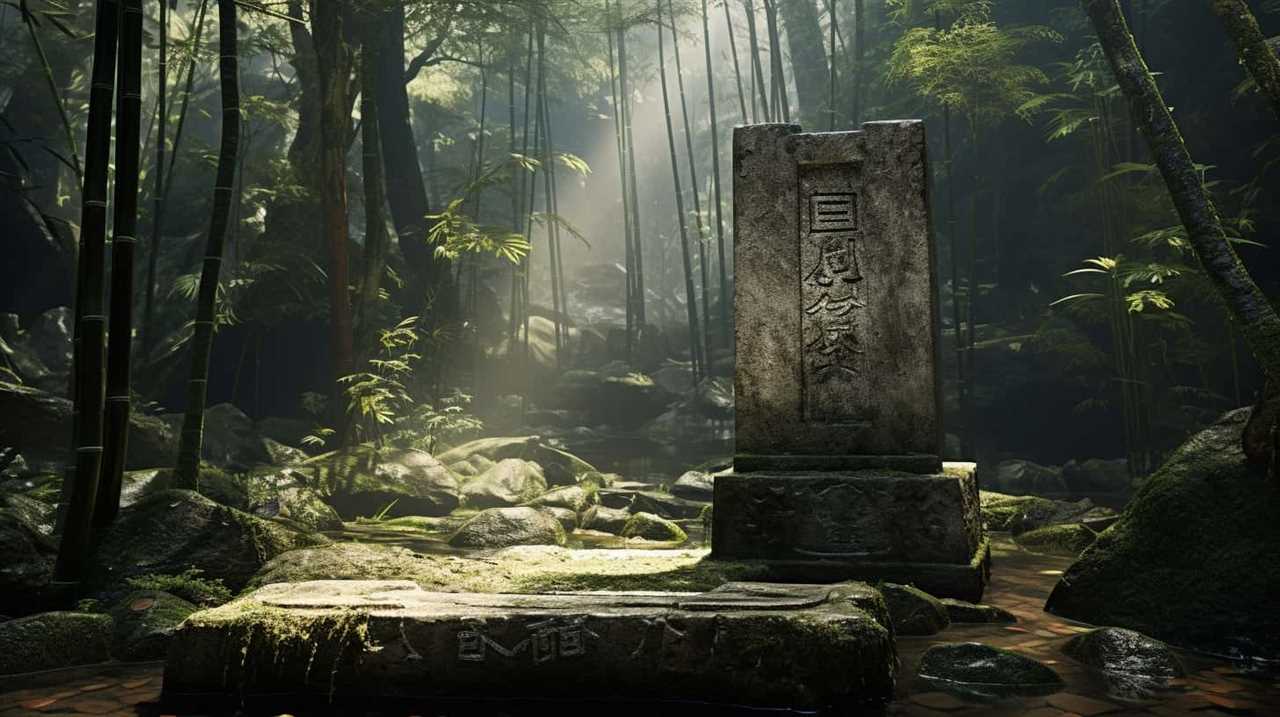
Cultivating resilience and embracing adversity are two key aspects of Stoicism that can greatly enhance our ability to navigate life’s challenges. By practicing mindfulness, we learn to observe our thoughts and emotions without judgment, allowing us to develop a more balanced perspective.
Meditation helps us train our minds to stay present, even in the face of adversity, enabling us to respond with clarity and composure.
Incorporating Stoic principles into our daily lives can help us develop a sense of inner strength and resilience, allowing us to face life’s difficulties with a calm and centered mindset.
The Pursuit of Wisdom
In our quest for wisdom, we must strive for a deep understanding of life’s complexities, in order to navigate them with clarity and purpose. The pursuit of knowledge and intellectual growth is crucial in this endeavor. Stoicism, with its emphasis on reason and self-improvement, offers valuable insights that can guide us in our pursuit of wisdom.

To begin, the pursuit of knowledge requires us to cultivate a curious and open mind. We must be willing to question our beliefs and seek new perspectives. Stoicism encourages us to examine our assumptions and challenge our preconceived notions, enabling us to expand our understanding of the world.
Furthermore, intellectual growth necessitates a commitment to continuous learning. Stoics advocate for the study of philosophy, as it provides a framework for developing wisdom and virtue. By engaging with philosophical texts and engaging in thoughtful discussions, we can refine our thinking and deepen our understanding of life’s fundamental questions.
Finally, the pursuit of wisdom demands introspection and self-reflection. Stoicism teaches us the importance of examining our values and aligning our actions with our principles. By cultivating self-awareness and practicing self-discipline, we can strive for moral excellence and lead a more meaningful life.
Stoicism and Emotional Intelligence
Exploring the relationship between Stoicism and emotional intelligence reveals the profound impact this philosophical framework can have on our ability to understand and manage our emotions. Stoicism emphasizes the development of emotional resilience and self-awareness, both of which are crucial for cultivating emotional intelligence.

Here are four key insights that Stoicism offers in this regard:
- Emotional Resilience: Stoicism teaches us to accept and embrace our emotions, rather than trying to suppress or avoid them. By acknowledging and understanding our emotions, we can develop the resilience needed to navigate life’s challenges with grace and composure.
- Self-Awareness: Stoicism encourages self-reflection and introspection, enabling us to gain a deeper understanding of our own thoughts, feelings, and behaviors. This self-awareness allows us to recognize and regulate our emotions more effectively, leading to greater emotional intelligence.
- Detachment: Stoicism teaches us not to be overly attached to external outcomes or circumstances. By cultivating a mindset of detachment, we can reduce the influence of external events on our emotional state, leading to greater emotional stability and control.
- Acceptance: Stoicism emphasizes the importance of accepting things beyond our control. By accepting the inevitable ups and downs of life, we can develop a more balanced and equanimous approach to our emotions, fostering emotional intelligence.
Living in Accordance With Nature
Our understanding of Stoicism and emotional intelligence is further deepened when we explore the concept of living in accordance with nature. Stoicism teaches us to live in harmony with the natural order of the universe, recognizing that there’s a greater plan beyond our individual desires and preferences.
Living in accordance with nature means aligning our thoughts, actions, and emotions with the inherent laws that govern the world. It requires us to accept the things we can’t change and focus our energy on what’s within our control. By doing so, we can find inner peace and tranquility, regardless of external circumstances.
In today’s fast-paced and chaotic world, living in accordance with nature can be a powerful tool for self-mastery. It helps us navigate through challenges and setbacks with resilience and grace. Instead of resisting or fighting against the natural flow of life, we learn to adapt and find balance.

By embracing the natural order of things, we also develop a deeper sense of gratitude and appreciation for the present moment. We become more attuned to the beauty and interconnectedness of the world around us, fostering a greater sense of empathy and compassion towards others.
The Dichotomy of Control
Living in accordance with nature requires understanding and embracing the dichotomy of control. Stoicism teaches us that there are things within our control and things outside of our control. By recognizing this distinction, we can cultivate resilience and find peace in our lives.
- Focus on the internal: Stoicism emphasizes the importance of focusing on our thoughts, emotions, and actions, as these are within our control. By directing our attention inward and working on improving ourselves, we can find inner peace regardless of external circumstances.
- Acceptance of the external: Stoicism encourages us to accept the things that are outside of our control. We can’t change the weather, other people’s opinions, or unexpected events. By accepting these things as they are, we free ourselves from unnecessary frustration and find peace in the midst of chaos.
- Adaptability: Stoicism teaches us to be adaptable and flexible in the face of challenges. Instead of resisting change, we learn to embrace it and adapt our mindset and actions accordingly. This allows us to navigate through life’s uncertainties with resilience and grace.
- Focus on virtue: Stoicism reminds us that the only true good lies in our character and moral choices. Instead of seeking external validation or material possessions, we focus on cultivating virtues such as wisdom, courage, and justice. By aligning our actions with these virtues, we find a deeper sense of fulfillment and peace.
Stoicism in Relationships and Social Interactions
When it comes to relationships and social interactions, Stoicism teaches us to focus on what we can control and to approach others with empathy and understanding. In romantic relationships, Stoicism encourages us to let go of our attachment to outcomes and to instead focus on being virtuous individuals. This means being honest, trustworthy, and supportive partners, regardless of the actions or reactions of our significant others. Stoicism reminds us that we can’t control how others feel or behave, but we can control our own actions and reactions.
In workplace interactions, Stoicism guides us to approach colleagues with empathy and understanding. It teaches us to not take things personally and to instead focus on finding common ground and working towards shared goals. Stoicism encourages us to practice emotional resilience and not to be swayed by external circumstances or the opinions of others. By maintaining a calm and rational mindset, we can navigate workplace dynamics more effectively and foster positive relationships with our colleagues.
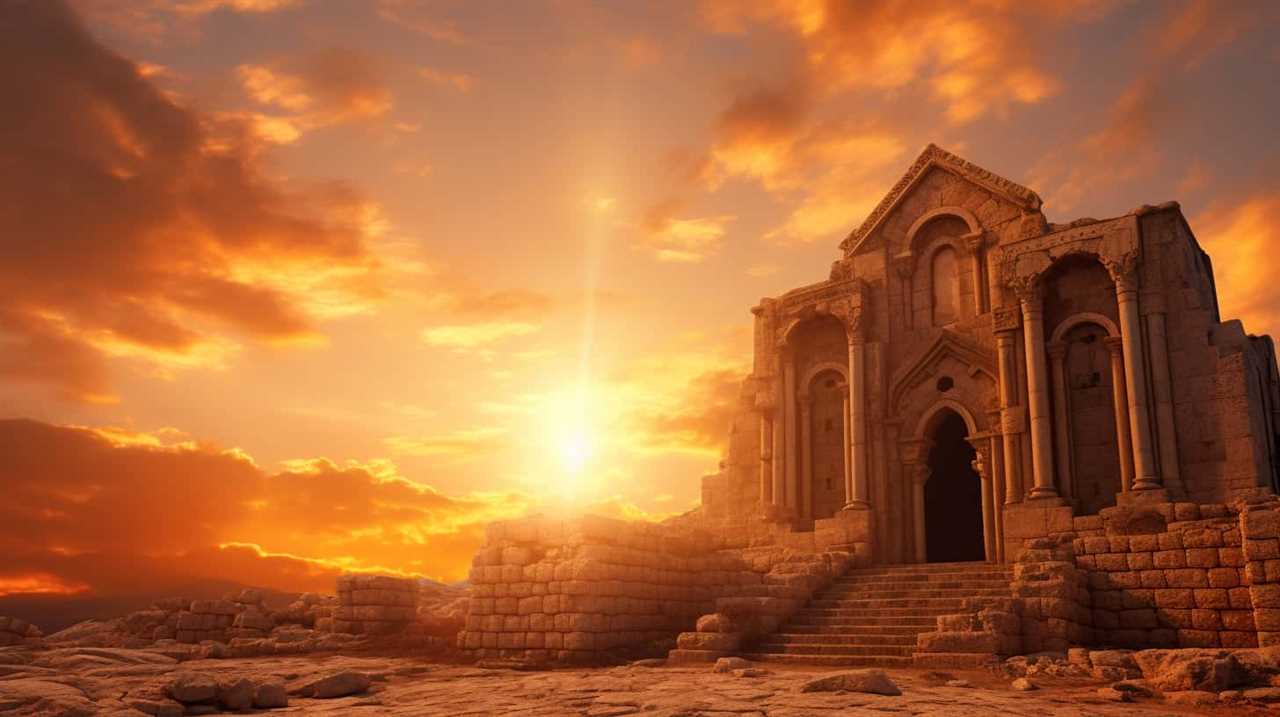
Stoic Practices for Daily Life
To incorporate Stoic principles into our daily lives, practicing mindfulness is essential. By cultivating awareness of our thoughts, emotions, and actions, we can better align them with Stoic teachings for modern life.
Here are four daily stoic exercises that can help us integrate Stoicism into our daily routines:
- Morning Reflection: Begin each day by reflecting on the Stoic virtues of wisdom, courage, justice, and temperance. Consider how you can embody these virtues in your thoughts, words, and actions throughout the day.
- Contemplation of Impermanence: Remind yourself of the transient nature of all things. Reflect on the impermanence of material possessions, relationships, and even life itself. This practice helps cultivate gratitude for the present moment and reduces attachment to outcomes.
- Adversity as Opportunity: Embrace challenges as opportunities for growth and character development. Adopt a mindset that views obstacles as stepping stones on the path to virtue. This perspective allows us to approach difficulties with resilience and equanimity.
- Evening Examination: Reflect on the events of the day and identify areas where you could have acted in accordance with Stoic principles. Take note of any instances where you let emotions or external circumstances dictate your reactions. Use this examination as a learning opportunity for future growth.
Frequently Asked Questions
How Can Stoicism Help in Dealing With Grief and Loss?
Coping with grief and loss can be challenging. Stoicism offers valuable coping mechanisms and helps cultivate emotional resilience. By focusing on what we can control and accepting life’s uncertainties, Stoicism teaches us to manage our emotions with wisdom and strength.
Can Stoicism Be Practiced Alongside Other Belief Systems or Religions?
Stoicism can indeed be practiced alongside other belief systems or religions. It offers a unique perspective on spirituality, emphasizing self-discipline and mindfulness. By incorporating Stoic principles into our daily lives, we can cultivate a more balanced and resilient mindset.

What Are Some Practical Exercises or Techniques for Developing a Growth Mindset?
Mindfulness techniques and positive affirmations are practical exercises for developing a growth mindset. By staying present and aware, we can cultivate resilience and embrace challenges as opportunities for growth and self-improvement.
How Can Stoicism Help in Overcoming Addiction or Unhealthy Habits?
Overcoming addiction or unhealthy habits can be challenging, but stoicism offers valuable insights. By teaching us to recognize and overcome cravings, and break patterns of behavior, stoicism can empower us to live healthier, more fulfilling lives.
Are There Any Specific Stoic Practices or Teachings for Improving Decision-Making Skills?
Stoic practices offer practical exercises for improving decision-making skills. By cultivating a growth mindset and integrating Stoicism with other belief systems, we can navigate grief and loss, overcome addiction, and break free from unhealthy habits.
How Can Stoicism’s Lessons Apply to Modern-Day Challenges?
Applying the principles of ancient Stoicism for adversity strength to current challenges can offer valuable insights. The teachings of Stoicism emphasize the importance of maintaining a sense of inner calm and focusing on what is within our control. This mindset can provide valuable guidance in navigating the complexities of modern-day hurdles.
Conclusion
In conclusion, embracing stoicism in our modern lives can provide us with invaluable lessons and tools for navigating the challenges and uncertainties that we face.

By cultivating inner resilience, finding serenity in chaos, and living in accordance with nature, we can discover a sense of peace and fulfillment. Stoicism teaches us to accept what we can’t control and focus on what we can.
It’s a philosophy that empowers us to lead virtuous lives and create meaningful connections with others. Let stoicism be the compass that guides us towards a life of wisdom and tranquility.
Fritz is a writer whose humor and wit infuse life into words. His creativity, combined with a profound love for the English language, makes him a unique voice at afterQuotes. Fritz’s engagement with books, culture, and social media adds depth to his contributions, making them resonate with our diverse audience.




